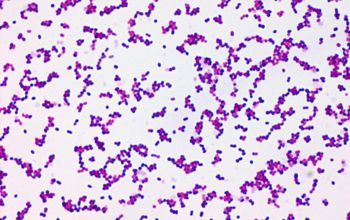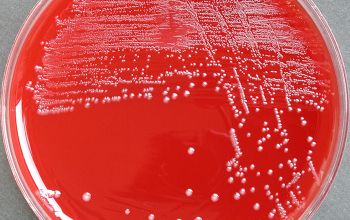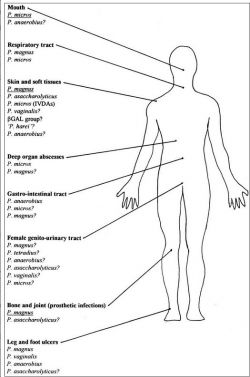Peptostreptococcus anaerobius
-
General information
General information
P. anaerobius is only distantly related to other GPAC and is easily identified by a variety of techniques.
Taxonomy
Family: Peptostreptococcaceae
Natural habitats
P. anaerobius is part of the gastrointestinal flora and is commonly isolated from human clinical specimens, particularly from the abdominal cavity and genitourinary tract, but usually in heavily mixed growth; its place in the normal flora and infections of the mouth is less clear.
Clinical significance
It has been isolated from a wide variety of human clinical specimens, abscesses of the brain, jaw, pleural cavity, ear, pelvic, urogenital, and abdominal regions, as well as blood, spinal and joint fluid, and cases of osteomyelitis.
It has been recovered from specimens from periodontitis and intraoral sepsis and is one of the most common species of GPAC in infections of the abdominal cavity and the female genitourinary tract
Isolation in pure culture is rare.
-
Gram stain
Gram positive cocci,
0.5 to 0.7 µm,
usually coccobacillary,
and is often highly pleomorphic;
the cells are arranged in chains
-
Culture characteristics
-
Obligate anaerobic
BBAØ: growth is more rapid than with other species of GPAC; most strains form distinctive colonies, 1 mm after 24 h, which are grey with slightly raised off-white centers.
Odor: usually give a distinctive, sickly sweet odor
With experience, presumptive identification can be made by a combination of cellular and colonial morphology and odor
-
-
Characteristics
-
References
James Versalovic et al.(2011) Manual of Clinical Microbiology 10th Edition
Karen C. Carrol et al (2019) Manual of Clinical Microbiology, 12th Edition
Murdoch, D.A.,1998. Gram-positive anarobic cocci. Clin. Microbiol. Rev. 11:81-120




